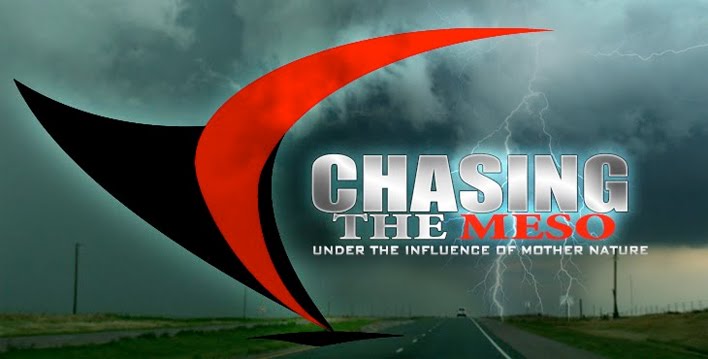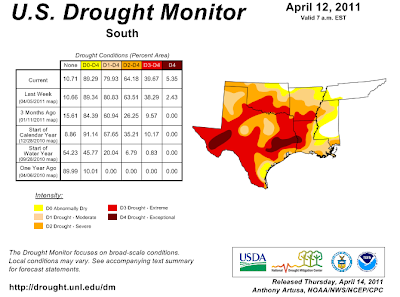Severe Weather
Safety Guide
Just like a fire, an earthquake or an automobile accident, a tornado is a low probability, high impact event. Chances are, you will never experience a tornado. Even if you live in the heart of tornado alley, the chances that your house will be struck by a tornado are small. However you still need to be ready just in case you hit winning lottery ticket. Your tornado safety plan is your life saver when severe weather threatens.
The severe weather safety guidelines exist because they work most of the time. Following these guidelines won't guarantee you won't be hurt or killed, but it significantly improves your chances of survival. it is important to understand what part of the year, and what time of the day, severe weather is most likely. Those should be the times when your severe weather awareness is highest, as it is when you are most likely to be adversely impacted. Bear in mind though that tornadoes and severe weather can occur at any time of the year, day or night.
Have a FAMILY DISASTER PLAN prepared including a disaster supply kit. Which would include water, clothing, blanket, First aid kit & meds, Battery powered NOAA Weather Radio, Flashlight with extra batteries, Cash and anything special for elderly or infant.
Be Prepared. . .It's Up to YOU!
Each year, many people are killed or seriously injured by tornadoes and severe thunderstorms despite advance warning. Some did not hear the warning, while others heard the warning but did not believe it would happen to them. The following preparedness information, combined with timely severe weather watches and warnings, could save your life. Once you receive a warning or observe threatening skies, YOU must make the decision to seek shelter before the storm arrives. It could be the most important decision you will ever make.
What Can Do Before Severe Weather Strikes YOU
Develop a plan for you and your family at home, work, school, and when outdoors. The American Red Cross offers planning tips on their Internet site:
http://www.redcross.org/services/disaster/keepsafe/
Identify a safe place to take shelter. Information on how to build a Safe Room in your home or school is available from the Federal Emergency Management Agency at
http://www.fema.gov/hazard/tornado/to_saferoom.shtm
Know the county/parish in which you live or visit. The National Weather Service issues severe weather warnings on a county. Keep a highway map nearby to follow storm movement from weather bulletins.
Have a NOAA Weather Radio with a warning alarm tone and battery back-up to receive warnings.
National Weather Service watches and warnings are also available on the Internet. Select your local National Weather Service office at
http://www.weather.gov/organization.php or go to the National Weather Service Home Page at
http://www.weather.gov/
Listen to radio and television for weather information.
Check the weather forecast before leaving for extended periods outdoors. Watch for signs of approaching storms.
If severe weather threatens, check on people who are elderly, very young, or physically or mentally disabled
What YOU Can Do When Threatening Weather Approaches
Lightning Safety Rules
Postpone outdoor activities if thunderstorms are imminent. This is your best way to avoid being caught in a dangerous situation.Move to a sturdy building or car. Do not take shelter in small sheds, under isolated trees, or in convertible automobiles. Stay away from tall objects such as towers, fences, telephone poles, and power lines.
If lightning is occurring and a sturdy shelter is not available, get inside a hard top automobile and keep the windows up. Avoid touching any metal. Do not take a bath or shower during a thunderstorm. Turn off air conditioners. Power surges from lightning can cause serious damage. If Caught Outdoors and No Shelter Is Nearby Find a low spot away from trees, fences, and poles. Make sure the place you pick is not subject to flooding.
If you are in the woods, take shelter under the shorter trees. If you feel your skin tingle or your hair stand on end, squat low to the ground on the balls of your feet. Place your hands over your ears and your head between your knees. Make yourself the smallest target possible and minimize your contact with the ground. DO NOT lie down.
Remember, if you can hear thunder – you are close enough to be struck by lightning!
Tornado Safety Rules
-In a home or building, move to a pre-designated shelter, such as a basement.
-If an underground shelter is not available, move to a small interior room or hallway on the lowest floor and get under a sturdy piece of furniture. Put as many walls as possible between you and the outside. Stay away from windows.
-Get out of automobiles. Do not try to outrun a tornado in your car; instead, leave it immediately for safe shelter.
-If caught outside or in a vehicle, lie flat in a nearby ditch or depression and cover your head with your hands. Be aware of flying debris. Flying debris from tornadoes causes most fatalities and injuries.
-Mobile homes, even if tied down, offer little protection from tornadoes. You should leave a mobile home and go to the lowest floor of a sturdy nearby building or a storm shelter.
Flash Flood Safety Rules
-Avoid walking, swimming, or driving in flood waters.
-Stay away from high water, storm drains, ditches, ravines, or culverts. If it is moving swiftly, even water six inches deep can knock you off your feet.
-If you come upon flood waters, stop, turn around, and go another way. Climb to higher ground.
-Do not let children play near storm drains.
Stay Informed. . .Use NOAA Weather Radio
The National Weather Service continuously broadcasts warnings and forecasts that can be received by NOAA Weather Radios, which are sold in many stores. The average range is 40 miles, depending on topography. Purchase a radio that has a battery back-up and a Specific Area Message Encoder feature, which automatically alerts you when a watch or warning is issued for your county or parish.
Check with your local National Weather Service office or visit the Internet site to determine if your county is covered by NOAA Weather Radio. National Weather Service watches and warnings are also available on the Internet by selecting your local National Weather Service office at or by going to the National Weather Service Home Page.
What to Listen For...
Tornado Watch: Tornadoes are possible in your area. Remain alert for approaching storms. Know what
counties are in the watch area by listening to NOAA Weather Radio or your local radio/television outlets
Severe Thunderstorm Watch: Tells you when and where severe thunderstorms are likely to occur. Watch the sky and stay tuned to know when warnings are issued.
Tornado Warning: A tornado has been sighted or indicated by weather radar.
Severe Thunderstorm Warning: Issued when severe weather has been reported by spotters or indicated by radar. Warnings indicate imminent danger to life and property to those in the path of the storm.
So what can you do if stuck in your home.... I have a real simple rule I tell my school kids when doing talks.
It's called the
DUCK rule.
Home Safety
In the drawings below you can see simple layouts of typical homes. The area outlined in yellow are the areas that would be the safest place to be in case of a tornado.

 Today the tornado threat is lower but still nothing to take lightly with a very unstable atmosphere. Many of the storms will be capable of producing very large hail up to softball. Tornado will most likely occur with discrete supercells that can turn right. Greatest risk of tornadoes comes in two areas I believe, One across NE OK near Tulsa and another one around Lawton & Wichita Falls by late afternoon.
Today the tornado threat is lower but still nothing to take lightly with a very unstable atmosphere. Many of the storms will be capable of producing very large hail up to softball. Tornado will most likely occur with discrete supercells that can turn right. Greatest risk of tornadoes comes in two areas I believe, One across NE OK near Tulsa and another one around Lawton & Wichita Falls by late afternoon. 













































